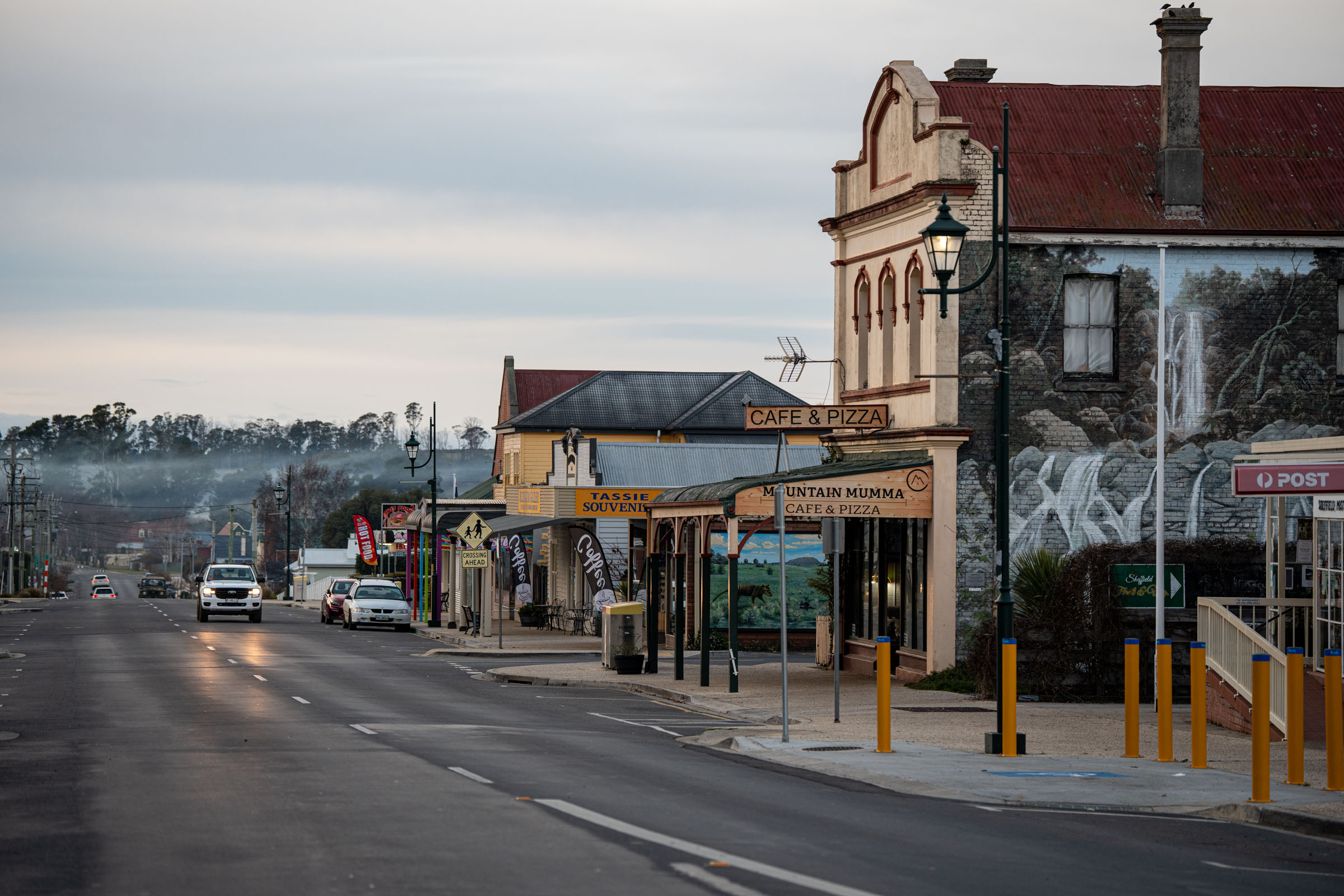Cethana pumped hydro project
Lake Cethana in the Mersey-Forth scheme is Hydro Tasmania's preferred site for a proposed pumped hydro project. Pumped hydro will play a big role in the future because we're using more wind and solar power for electricity. But wind and solar don't always generate power. That's where pumped hydro comes in - it helps make our energy grid more reliable.
Our team loves talking about these plans and hearing what you think! You can read more on our project page or get in touch with us.
If you'd like to know more about the proposed workforce accommodation facility, head here.
Project update - December
We had a great time at Lorinna on the weekend, with thanks to those who stopped by for a chat! Thanks also to everyone who has shared their views so far on the proposed project. We’re now developing the Social Impact Assessment (SIA). This looks at how the project might affect people and what’s important to them; how they live, how they connect, and how they value the surroundings. Over the past few months, our team has held workshops and pop-up sessions to gain insights from the local community. We have listened to the concerns raised and are currently analysing the information before it is incorporated into the final SIA. Our latest community and project update is now available, along with a new fact sheet that contains information on the WAF location and the Gowrie Park site assessment. We wish you a happy and safe festive season and look forward to continuing the conversation in 2026! |  |
Project update - October
 | We’re progressing our plans for housing a future workforce for the Cethana pumped hydro project. We’ve found a site in Middlesex for a temporary Workforce Accommodation Facility. The site has advantages of being less than 10-minute drive to site, suitable size and flat terrain, potential to minimise visual impact and easy access off Cradle Mountain Road. Thanks to everyone in the community who has shared their feedback. We’re committed to planning the facility carefully so that any impacts to the community are minimised. We continue to welcome peoples comments on the project at any time. We’re also doing technical assessments to better understand and manage potential impacts. The findings will be shared as part of the WAF Development Application submitted to Kentish Council. The community will have the opportunity to comment when it goes on public exhibition. Check out our WAF info page and keep an eye on this page for updates! |
What is the Cethana project?
From our investigations, we identified three top opportunities in the state for pumped hydro (in the North-West and on the West Coast). We gathered detailed information on each, and assessed how suitable they were based on technical, environmental, social and economic factors. Hearing from local communities was an important part of this process.
Cethana was selected as our preferred site because of its deep storage capacity, cost-effectiveness and higher technical certainty, environmental and social sustainability and flexibility in sizing and capacity.
The Cethana project would utilise the existing Lake Cethana as the lower storage. A new upper storage would be constructed to the west of the existing lake. An underground power station would be constructed between the two storages and underground tunnels would link them together.
There would be a new transmission line connection from the power station switchyard to TasNetworks’ proposed new Staverton Substation, primarily located within the existing transmission line corridor.
The project would have a generating capacity of 750 MW and a storage capacity of 20 hours. The construction phase would extend for approximately six to eight years with a construction workforce of up to 400 people (at the peak).
We are currently planning for a new temporary workforce accommodation facility. You can read more about the WAF here.
The map below details the proposed project layout and where major infrastructure would be built.
If you'd like to make the diagrams larger, right click and select 'open in a new tab".

About pumped hydro
Australia’s electricity market is relying more and more on wind and solar generation. This brings a growing need for energy in storage to cover those times when the sun doesn’t shine and the wind doesn’t blow (or both together!).
Pumped hydro will help keep energy supply reliable for consumers by generating electricity on-demand to fill in the gaps.
Pumped hydro schemes have two water storages – one at high elevation (upper storage) and one at low elevation (lower storage).
Here’s how it works:
- When the demand for electricity is low, or when renewable sources are abundant (and prices are low), water is pumped to the upper storage. It is then stored.
- When the demand for electricity is high, or when renewable sources are scarce (and prices are high), the water in the upper storage is used to generate electricity. Water in the upper storage is released downhill, through the power station turbines, generating electricity at the flick of a switch.
You can also check out our short video which explains it all!
https: //www.youtube.com/watch?v=cbh_fhwjzNs
Project approvals process
The Cethana project will require a range of approvals at Commonwealth, state and local government level.
In 2023, we submitted a referral to the Commonwealth Government under the Environment Protection and Biodiversity Conservation Act 1999 (EPBC Act).
The EPBC Act focuses on protecting matters of national environmental significance (called MNES).
Through our studies, we have identified the flora and fauna that may be impacted by the development and proposed mitigation measures to remove or reduce that impact.
This information is provided to the Commonwealth through our referral, allowing the Environment Minister to make a decision on whether project approval is needed and what controls need to be in place (if any).
Since our referral, we’ve undertaken extensive geotechnical and engineering work and the potential project footprint has increased. We consulted with DCCEEW (the regulatory body that manages EPBC referrals) on the changes since the original referral. DCCEEW recommended withdrawing and submitting a new referral. The new referral will ensure they can consider the works based on the latest information.
We will submit a new EPBC referral in coming months.
This is part of our work to reach a Final Investment Decision, which is a commercial assessment of the project’s viability.
Talking with the community
It’s important for us to continue to understand the views of the community and any concerns or issues you have about what is proposed.
We also want to know about and make the most of the opportunities that exist from the project for the local community.
As we finalise our specialist technical studies, we will share the findings with community in coming months.
In the meantime, we are always happy to discuss the project so please get in touch.
What's next
Specialist studies
Our technical studies allow us to better understand the potential project impacts and opportunities, and are part of the regulatory approvals process. These studies include:
- Noise and vibration
- Traffic and transport
- Visual amenity
- Social and economic, including workforce accommodation
The findings will form part of the Environmental Impact Statement (EIS) and will be shared with communities as we progress.
 |  |
We are here to listen. Post your questions below!














